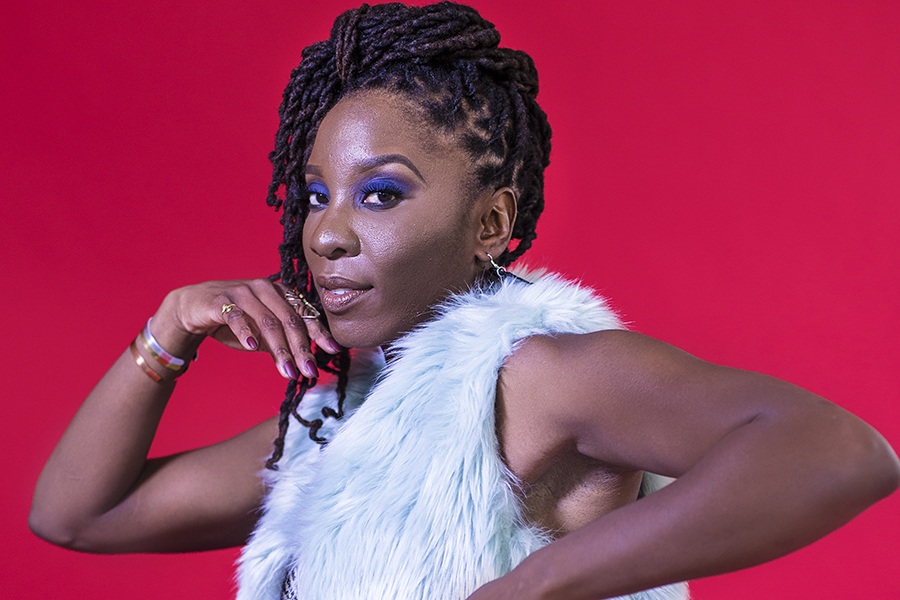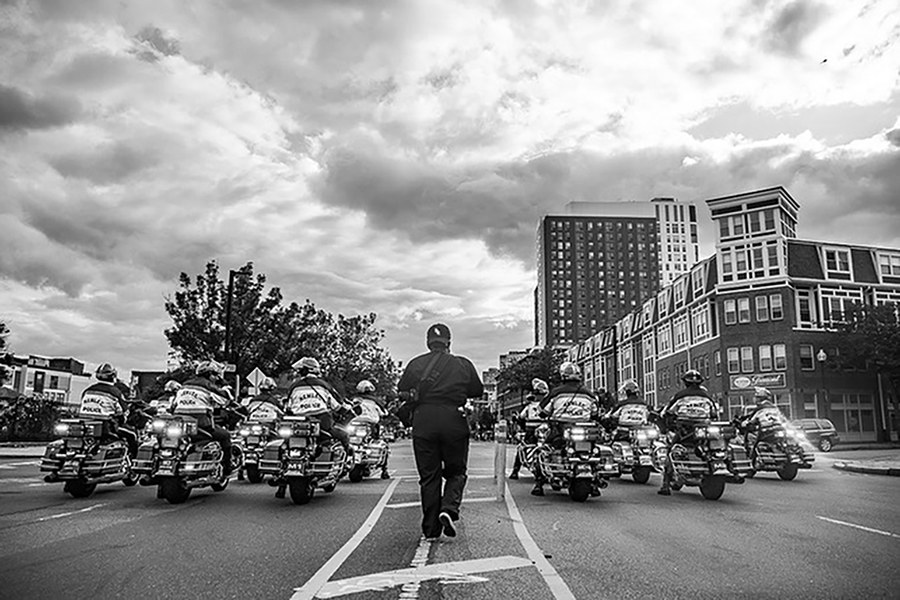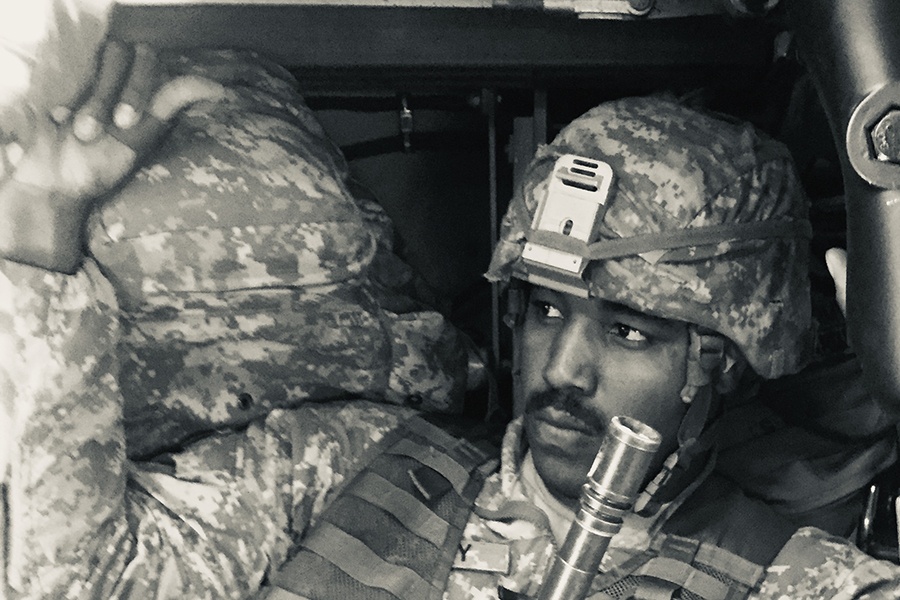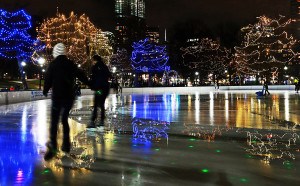Seven Black Boston-Based Artists on Their Work as a Form of Protest
Local photographers, designers, musicians, and more discuss how art and activism go hand in hand.
After the nation erupted in protests against police brutality in June 0f 2020, you may have also noticed your Instagram feed explode with vibrant art—infographics on defunding the police, black-and-white protest photography, and paintings depicting Black beauty in its many forms. Just as systemic racism isn’t a new phenomenon, neither is art as a response to the world around us. Long before and after #BlackoutTuesday trended and many feeds faded to white, social justice advocates have taken to the streets to protest and creatives have made art to say what they need to say. We spoke to seven local artists to hear how they use their work as an ongoing form of activism.

Photo by Ill-Digital Media
Aysha Upchurch
Dubbed “the dancing diplomat,” Aysha Upchurch is a lecturer at Harvard University. She currently teaches courses on hip hop education and serves as the director of HipHopEX.
What are you working on right now?
I worked with a couple of videographers recently on a dance. Dance is such a primary language. The moving body as a mode of expression is something that is always pulling in information, translating it, holding it, and expressing it outward. So I’m working on something that felt for me, as a Black identifying woman, like a reminder that there is so much joy in existing as a Black person. I’m not brilliant and amazing just because and despite of the collective trauma we’ve suffered, I’m brilliant and amazing, period.
I’m also embarking upon a weekly conversation series called #MovementMonday to really unpack some of the nuances of identity, equity, truth-telling, and dismantling, in the world of dance.
What message are you communicating through your work?
I call this practice of acknowledging what’s not yours “conscious fun.” You can teach and enjoy an aesthetic of something while also learning the consciousness and the context around it. It doesn’t bring less glory to you to acknowledge that it’s not yours. It does, however, bring less glory to the thing for you to abusively try to co-opt its ownership. So what I protest in my practice as an educator is any whitewashing of dance education or hip hop history and culture.
I’m someone who is not from Boston and there are amazing Black identifying artists and community organizers that are from here. And I feel fed by their work and sharpened by them to know that if my lane is to be in higher ed or be on the interweb, it’s not work that’s happening in isolation.
Where can people follow you?
My Instagram has links to HipHopEx, which I founded and direct, and Dope as A Verb (an acronym for Dismantling Oppression Pushing Education), which is still very new, but if I’m learning anything from quarantine time, it’s that you should just start stuff. So my Instagram and my website are the best ways to catch me.
View this post on Instagram
Delmeshia Haynes and Imani McFarlane
The mother-and-daughter designer and entrepreneurial duo run their handmade headwrap business, Tafari Wraps, out of their Seaport studio.
What are you working on now?
On June 15 we had a day-long production at Jamaica Pond. We collaborated with healing arts educator empress Donna Farquharson of TVOL Village to explore the symbiotic relationships between man and nature, using Orishas as our framework. Models were styled in head pieces and costumes designed by Tafari Wraps, and we worked with Boston-based photographer Athel Rogers. He’s amazing! We’re so excited to put it all together for the big release.
What’s the meaning behind your work?
Our art is healing. It is holistic. It is honest and uplifting. It is important to us, especially as the frequency of love is being heightened, that we honor our truth from the very beginning of its origin. We take authority over our voices and history. There is no way one can expect to manifest their best selves if operating from a space of lies, hurt, or cultural and historical repression.
Where can people follow you?
To view our headwrap collection and services, visit our website, where you can also schedule a one-on-one consultation or group Wrapshop. We have a YouTube channel that we are working to grow where you can find inspirational styling videos using our products. For the more day-to-day, definitely follow us on Instagram and Facebook.

Courtesy photo
Carlos Freire
Carlos Freire is a digital illustrator, animator, and photographer based in Somerville. He is currently a full-time freelance designer and art director.
What are you working on now?
A couple months back I started something called AfrikBeat with two friends that I grew up with. I’m first generation American, but my parents were born and raised in Cape Verde. So we have a huge, rich history in music, dance culture, and performing arts. With AfrikBeat, our plan is to provide a sole platform for Cape Verdean artists, and really all types of artists from Africa. We have a five to 10 year old plan to grow and eventually be recognized as a universal brand outside of Cape Verde. I do all the social and branding, and I’m a co-owner, as well.
What message are you conveying with your designs?
A lot of people get confused with what design is versus what other art is. With art, you put it out there and people can interpret it in many different ways. And even though design comes from an artsy place, design solves problems. So for example, I did this series of animations with these little cartoon characters and their eyes are really popping out. The message was how people can take themselves way too seriously and once you get to know them, they’re way goofier. I like the idea of demonstrating how quirky and cordial people can really be with each other, especially in the midst of all the tragedy that’s happening.
Where can people follow you?
You can find my work on my website or send me a note at carlossfreire89@gmail.com. And you can find AfrikBeat on Instagram and Facebook.
View this post on Instagram
Oompa
“Oompa is a nationally-acclaimed, Boston-born, poet, rapper, and educator, who is forever representing the queer, black, orphaned, hood kids and them,” reads the rapper’s website. She released her sophomore album Cleo last summer.
What are you working on now?
My biggest project at the moment is filling my life with joy and meaning. And second to that, I have a few projects I’m working on in the art world, and I’m conceptualizing new music. I’ve mostly just been playing around with being bad at things, so I’m getting back on the keyboard and kind of learning how to be bad at that, I’ve been slapping on the drums and I’m really bad at that, and I’ve been trying to work on my confidence with singing more melodic things. But also celebrating this idea that the stuff that we’re not good at or the unpolished stuff is worth celebrating too.
What are you saying through your music?
I’ve been writing a lot about joy and thinking about why it’s hard for me to just write about the joy without feeling like I have to put it in context. And not for nothing, but some of the chaos that kind of reemerges all the time in the world like what we’re seeing now, it kind of puts me at a calm. Me not having to explain that the world is crazy makes me feel calm, because now I can just make this stuff that is about joy and the things that I think are worth celebrating, because nobody has any questions right now. So I’m like okay good, now let me make this dance record.
If we make art, even if the content doesn’t directly address what’s happening in the world and what’s happening to Black people, I think that art is still protest. Because even if you’re leading people toward joy, or if you’re leading people toward the party, when Black people are making sense of their mind and the world, I think that’s a protest right there.
Where can people follow you?
My music is on all platforms, so Spotify, iTunes, and I have a show that I’m doing every Sunday on Facebook Live that I want to grow. Other than that, Instagram is probably my favorite platform and the best way to keep tabs on what’s going on in my world.

Photo by Bryan Lasky
OJ Slaughter
Photographer and creative director OJ Slaughter uses their camera to tell primarily Black and Brown stories, from dreamlike, colorful portraits to black-and-white protest photography.
What are you working on now?
I’ve been covering protests and going to sometimes two or three a day, or sometimes I skip a day. Since I can’t safely photograph protesters now, I’ve typically been shooting the police or I’ve been shooting a series on surveillance which is like, helicopters, drones, and people watching things happen from their windows. I’m just making sure that I’m documenting the history of right now, making sure that people feel heard, and that people are hearing a narrative that’s not whitewashed.
What’s the message behind your photography?
When I shoot portraiture of people of color and Black people, it’s supposed to be this dreamy world that maybe you haven’t visited before. But when these protests started, I realized when I shot them in color there was too much of a dystopian humor. I found that what I took away the color, it made them more stark and challenging to digest. Protest photography is more in your face, like what the hell is going on here.
I also just put out a zine with Boston Art Review, and it’s called “The Cost of Capitalism.” It comes with a fold-out poster and an invoice for reparations that prices out how much the zine should have really cost me for my physical and emotional labor. The idea is that George Floyd was accused of having a counterfeit $20 bill. So, the question is, what is the cost of capitalism? Is it Black lives? And the answer is yes.
Where can people follow you?
You can purchase my zine right now on the Boston Art Review website. It’s limited edition so you have to buy a copy of the latest issue of the Boston Art Review to get the zine, and 15% of whatever they sell is going to Black-led organizations in the city. Instagram is the best way to keep in touch with me.

Courtesy photo
jonn.beatty
Dorchester native jonn.beatty is a musician and rapper who previously served in the military. In his words, he “exists somewhere between pragmatic optimism and unexplained serendipity.”
What are you working on now?
I’m working on two projects that are scheduled for 2020 release. The first release follows suit of my previous YouTube project, “FICKS”, although its sound is much more of a dedication to the city that helped create it. This builds anticipation for my debut album, which includes elements of the “FREE” EP, but is a more well-rounded humanization of Black emotion. Although this project doesn’t discuss social justice in the same way as the EP, the listener will find the etchings of ‘the beautiful struggle’ inscribed into each expression.
What are you trying to say through your music?
My primary objective is to pair challenging the contemporary motifs that exist in modern day rap and hip hop with uncompromisingly immaculate sound production, in order to fortify the listener’s appreciation of another less-than-typical, Black, musical perspective. It’s candy coated vitamins. It’s lyrical Flintstone gummies that are great for all ages.
Where can people find your music?
My music is available on all streaming platforms including SoundCloud. At this link you can find my Instagram and my website, where you can subscribe for email updates on music and merch releases, and future performances.
View this post on Instagram
Lavaughn Jenkins
MassArt alumnus Lavaughn Jenkins creates his signature three-dimensional paintings—sculpted figures covered in thick, swirling layers of oil paint—in his Roxbury studio. You may have seen them featured in institutions such the ICA and the Abigail Ogilvy Gallery.
What are you working on now?
I’m making a life-size piece, and it’s my first one, so I’m learning a lot about how I need to balance things so they can stand on their own, which I don’t really have to worry about with my tiny figures. Scaling the 3D paintings up really forces you to be face to face with them, and you can’t avoid them. You can acknowledge them or not, but you’re going to have to walk around them to get past them.
What are you trying to say through your art?
One of my old mentors told me how once he was in New York, walking down whatever main street in the summertime and everyone had their giant boom boxes, and they were playing their music loud. And at first he was like man, that music is so damn loud. And he said, but then that’s how you have to paint. You paint loudly, whatever that means to you. And that’s kind of what I try to do now, and I think working in the third dimension allows me to really put my art in big speakers, you know. I have my boom box now.
I’m painting to give hope to people who look like me, particularly the youth. Growing up I didn’t know that being an artist was a possible thing to do, I didn’t know that this was a real world. And now that things are happening for me, it’s my job to show the possibility and maybe encourage and inspire people to do the same. And my art isn’t just for Black people, but I am specifically yelling at the Black community and hopefully being a beacon of hope and positivity for them. So I’m trying to do all that, and make a really good painting.
Where can people keep up with you?
I live on Instagram. There’ll be some announcements in a week or two, and my social media is where everyone can reach me and see my updated work.


